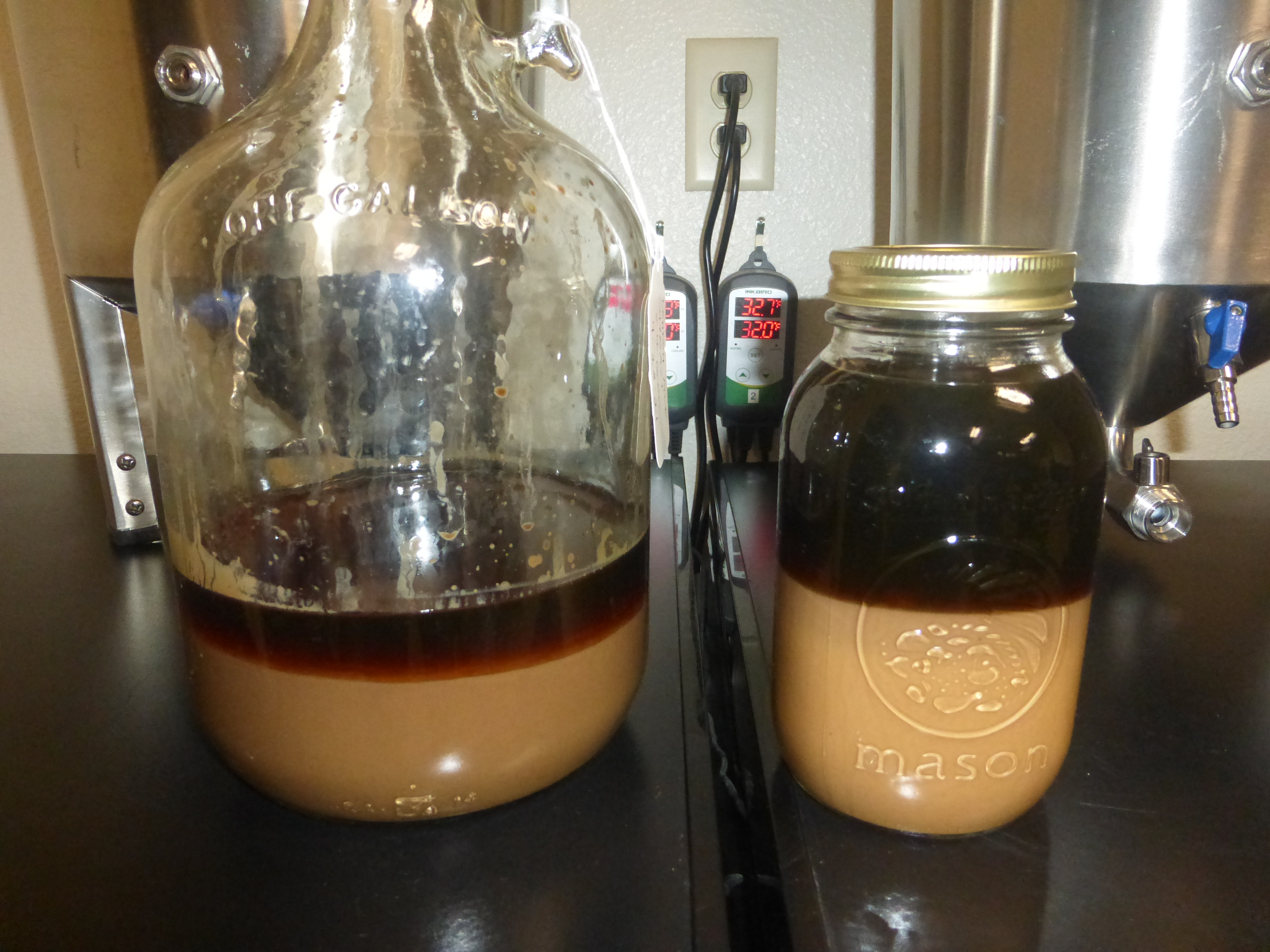RufusBrewer
Well-Known Member
I brewed an Alt using Wyeast 1007. I had a terrific fermentation. Short lag time, strong healthy ferment, reached finished gravity in 5-6 days, tastes great. When I saw how much stuff I had in the bottom of the primary, I transferred to a secondary and harvested what you see in the pictures.
I collected 4 flasks with 450-500 ml each. What you see in pictures is typical for all 4 flasks. I have not harvested yeast before. I have no idea about what I have in the flasks. I boiled with 1 ounce of pellets for a FWH. So I know some of that stuff is pellet. Any way to tell how much is pellet & how much yeast? I see a thin layer of white. Is that all the yeast, to and the rest is trub and hops?
So what can I do with what I got?
To be honest, I am not interested in putting much more effort into this. I have no problem with tossing these flasks and starting next batch with dry yeast, or fresh yeast and a new starter.
Thoughts. Advice. Suggestions. Best Practices.
t

I collected 4 flasks with 450-500 ml each. What you see in pictures is typical for all 4 flasks. I have not harvested yeast before. I have no idea about what I have in the flasks. I boiled with 1 ounce of pellets for a FWH. So I know some of that stuff is pellet. Any way to tell how much is pellet & how much yeast? I see a thin layer of white. Is that all the yeast, to and the rest is trub and hops?
So what can I do with what I got?
To be honest, I am not interested in putting much more effort into this. I have no problem with tossing these flasks and starting next batch with dry yeast, or fresh yeast and a new starter.
Thoughts. Advice. Suggestions. Best Practices.
t




























![Craft A Brew - Safale BE-256 Yeast - Fermentis - Belgian Ale Dry Yeast - For Belgian & Strong Ales - Ingredients for Home Brewing - Beer Making Supplies - [3 Pack]](https://m.media-amazon.com/images/I/51bcKEwQmWL._SL500_.jpg)































